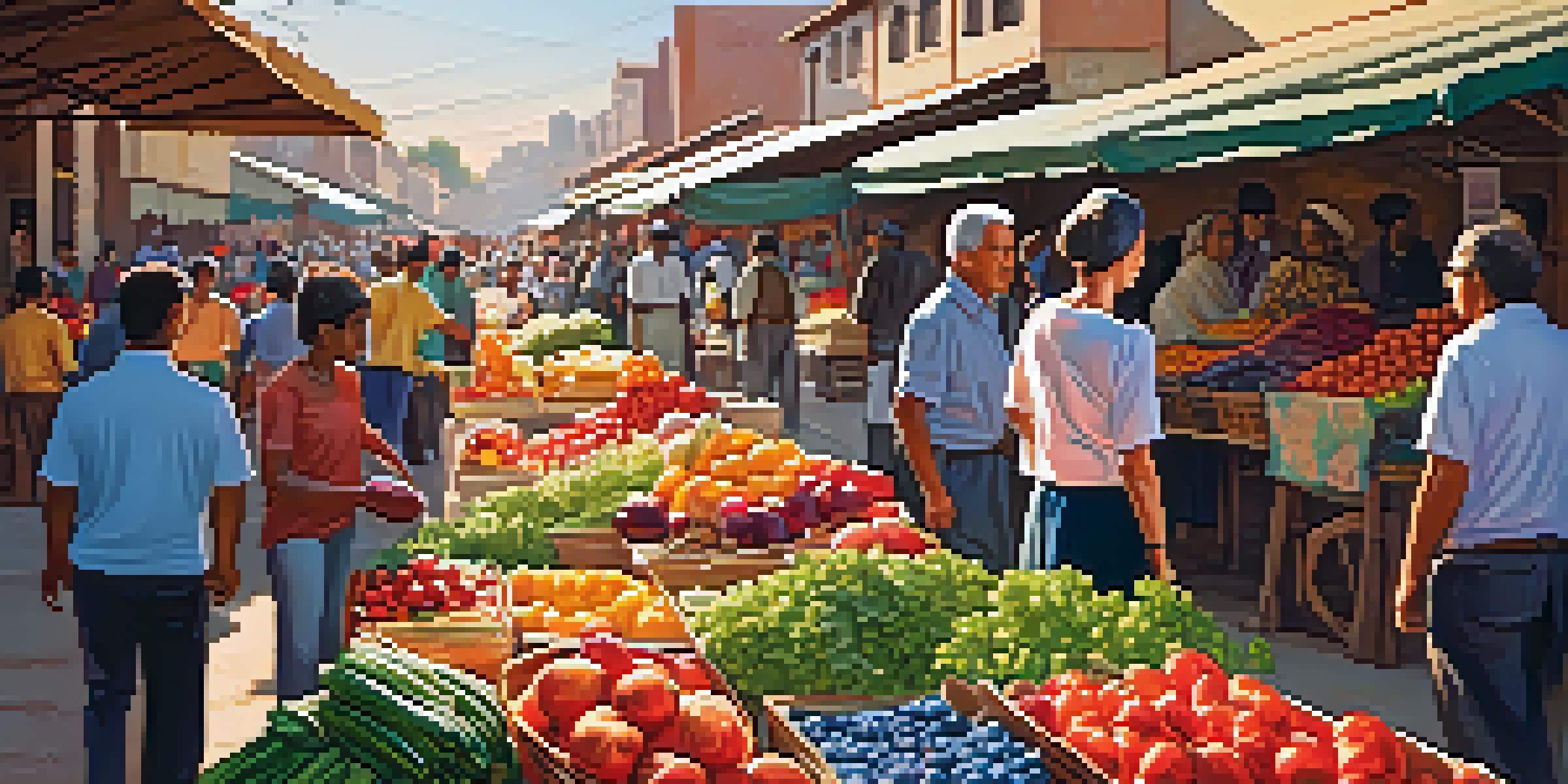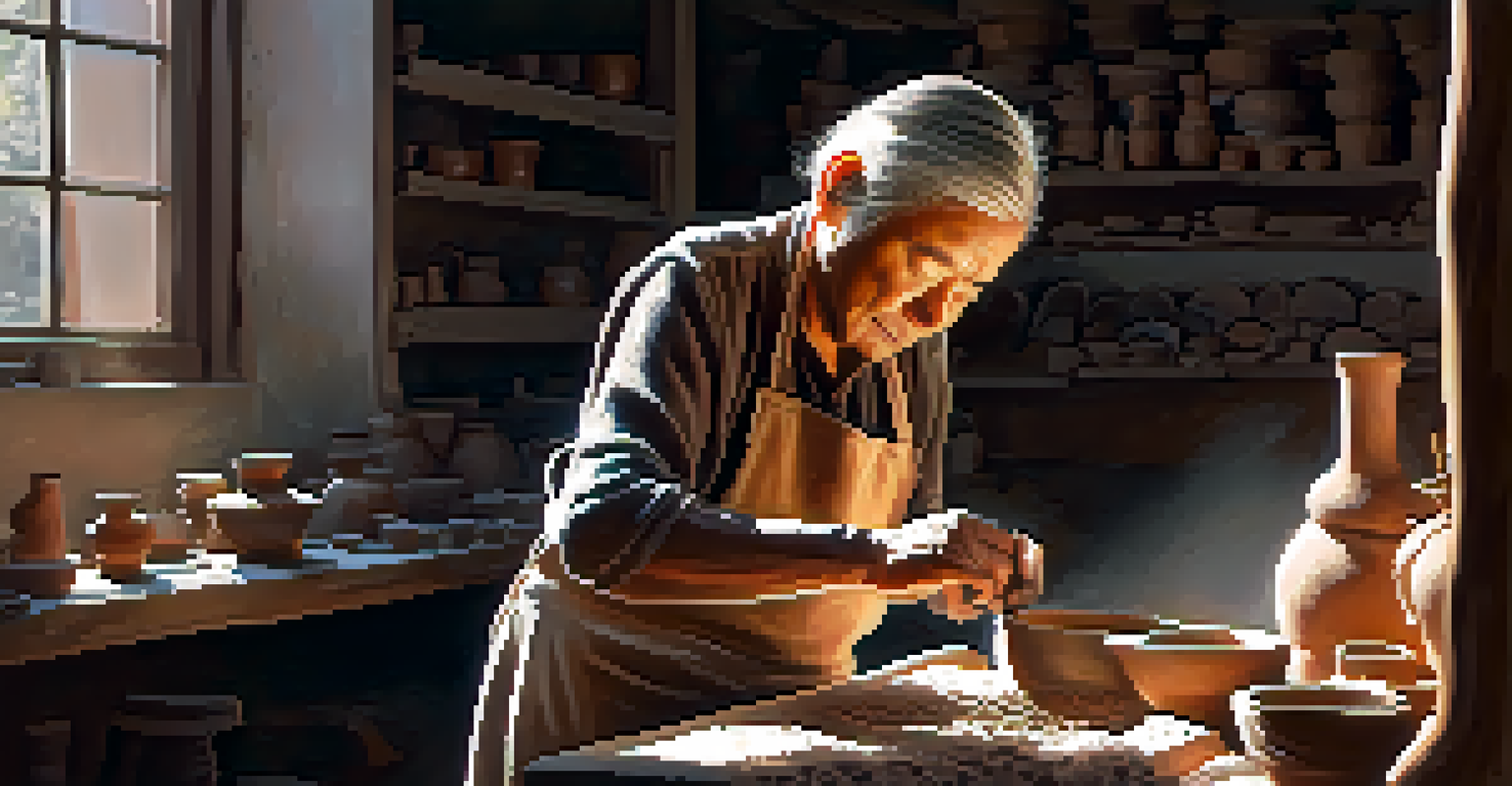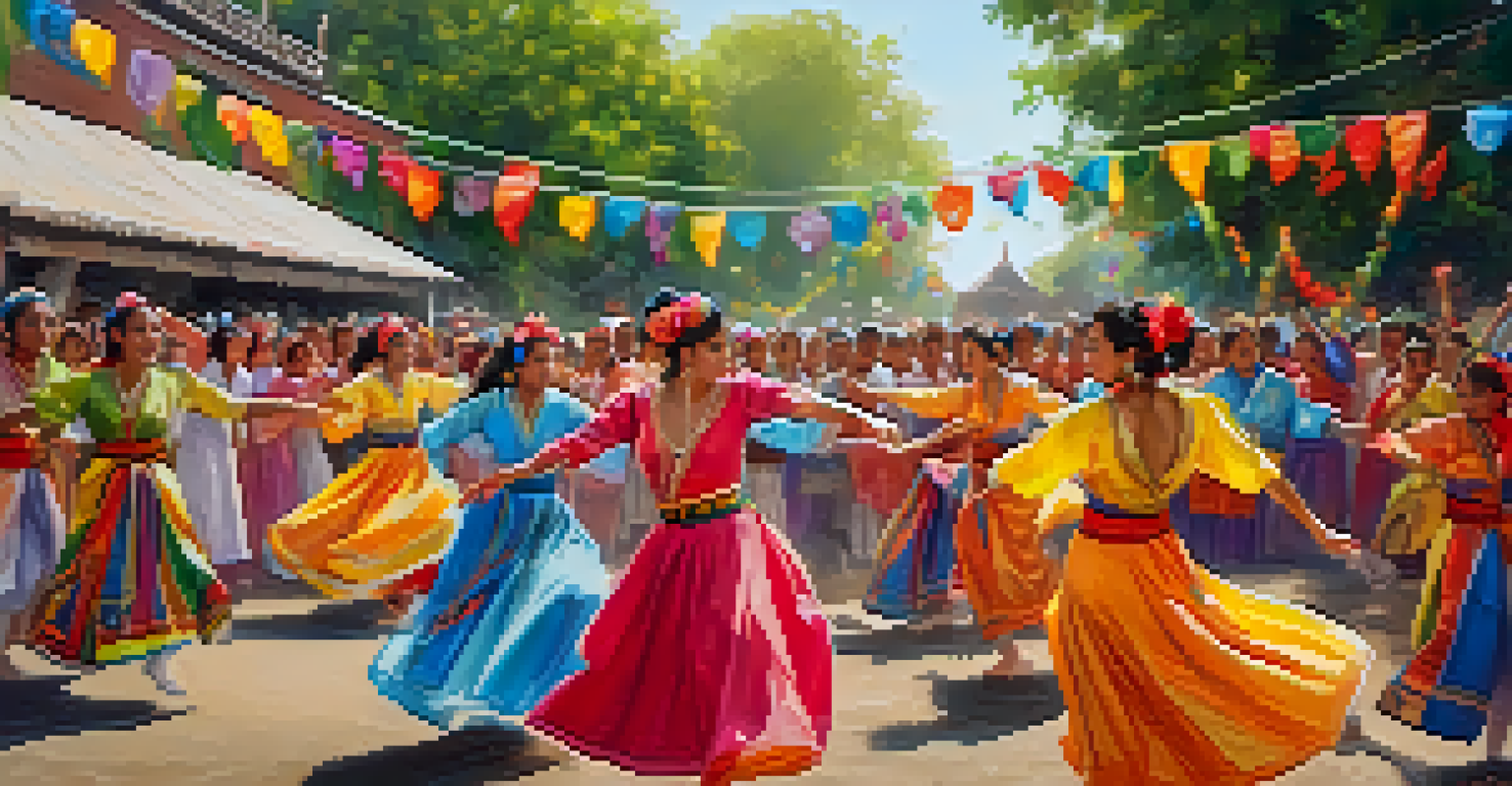Capturing Local Culture: Travel Photography Techniques

Understanding the Importance of Local Culture in Photography
When traveling, local culture serves as a vibrant backdrop that can enhance your photography. It tells a story that goes beyond mere scenery, showcasing the traditions, people, and daily life of a place. Understanding this cultural context allows you to capture images that resonate with authenticity and depth.
Photography is the story I fail to put into words.
For instance, think about a bustling market scene. The colors, sounds, and interactions create a dynamic atmosphere that reflects the local culture. By focusing on these elements, your photographs will not only represent a location but also evoke emotions and connections to its people.
Ultimately, appreciating the local culture can elevate your travel photography from simple snapshots to powerful narratives that engage viewers and inspire them to explore the world through your lens.
Researching Before You Travel: Know the Culture
Before you embark on your journey, taking the time to research the local culture can pay off immensely. Understanding the customs, traditions, and significant landmarks can help you anticipate what moments might be worth capturing. This knowledge will serve as your guide, making your photography more intentional.

For example, if you're visiting a festival, knowing its significance can help you identify the best angles and moments to photograph. You'll be able to capture the essence of the event rather than just a series of random images. This preparation turns your camera into a storytelling tool.
Embrace Local Culture in Photography
Capturing local culture enhances your photography, turning simple images into powerful narratives.
Additionally, engaging with locals and learning about their perspectives can lead to unique photographic opportunities that you might otherwise miss. This deeper connection enriches your experience and enhances your photographic storytelling.
Building Rapport with Locals: The Key to Authentic Shots
One of the most effective ways to capture local culture is by building rapport with the people you meet. When locals feel comfortable around you, they are more likely to share their stories, traditions, and even allow you to photograph them. This connection can lead to striking images that reflect genuine moments.
The camera is an instrument that teaches people how to see without a camera.
Imagine capturing a portrait of a street vendor who shares their craft with you. The resulting photograph will likely convey not just their likeness but also their passion and pride in what they do. Such authentic interactions create a narrative that resonates with viewers.
Remember, a smile goes a long way. Approaching people with respect and curiosity can lead to moments that you might not have experienced otherwise. The stories you capture will be a testament to the rich tapestry of local life.
Utilizing Natural Light for Stunning Cultural Images
Natural light can be your best friend when it comes to travel photography. It enhances the colors and textures of your subjects, making them pop in your images. Understanding how to utilize different lighting conditions can dramatically improve your photos of local culture.
For instance, the golden hour—just after sunrise and before sunset—provides a warm, soft light that can create a magical ambiance in your shots. This time is ideal for capturing bustling streets or serene landscapes, adding a touch of beauty to your cultural narratives.
Build Connections with Locals
Establishing rapport with locals leads to authentic moments that enrich your photographic storytelling.
Experimenting with shadows and highlights can also lead to striking compositions. By paying attention to how light interacts with your subjects, you can create images that feel alive and vibrant, showcasing the local culture in its best light.
Framing and Composition: Tell a Story with Your Shots
Composition is crucial in photography; it’s how you frame your subject within the shot. Using techniques like the rule of thirds can help you create balanced images that draw the viewer's eye naturally. This strategic framing adds depth and context to your photos, enhancing the cultural story you want to tell.
Consider capturing a local artisan at work. By framing them amidst their tools, you not only focus on the person but also highlight their craft. This approach invites viewers into their world and provides insight into the local culture.
Experimenting with different angles and perspectives can also yield captivating results. Sometimes, moving just a few steps can change the entire narrative of your photograph, making it more engaging and impactful.
Capturing Movement: Showcasing the Energy of Local Life
Movement can add dynamism to your travel photography, bringing your images to life. Whether it’s people bustling in a market or dancers performing in a festival, capturing movement can convey the vibrancy of local culture. Techniques like using a faster shutter speed can freeze action, while a slower speed can create beautiful motion blur.
For example, photographing a street performer in motion can capture not just their skill but also the atmosphere of excitement around them. This kind of imagery tells a story that resonates with the energy of the place.
Utilize Natural Light Effectively
Using natural light can dramatically improve your images, highlighting the vibrancy of local culture.
Don't be afraid to experiment with different photographic techniques to portray movement. The key is to remain patient and observant, waiting for those moments that truly embody the spirit of local life.
Post-Processing Techniques to Enhance Cultural Images
Post-processing can be a powerful tool to enhance your travel photographs. With software like Adobe Lightroom or Photoshop, you can adjust lighting, contrast, and colors to better reflect the mood and culture of the scene you captured. This step allows you to bring out details that might have been missed in-camera.
For example, emphasizing the vibrant colors of a local market can transport viewers directly into the scene. It helps evoke emotions and makes the cultural experience more relatable and engaging.

However, it’s important to maintain authenticity in your edits. Strive for enhancements that highlight the culture rather than distort it. Your goal should be to preserve the essence of the moment while making your images more visually appealing.